The government could overrule its scientific and medical advisers and relax the two-metre coronavirus social distancing rule, the chancellor has said.
Asked on Sunday whether the chief scientist and chief medical officer would have to agree with a relaxation of the policy, Rishi Sunak said ministers were ultimately “elected to make decisions” and suggested they were not bound by the views of experts.
Boris Johnson this weekend commissioned a review into the policy, which has been increasingly criticised by Conservative MPs like Iain Duncan Smith and Damian Green, who say an abundance of caution is hurting businesses. Business lobby groups have also called for the rule to be relaxed.
Download the new Independent Premium app
Sharing the full story, not just the headlines
“I think Chris Whitty and Patrick Vallance throughout all of this have provided advice to ministers and ultimately it’s for ministers, whether it’s me, the prime minister, health secretary, and others, we are the people who are elected to make decisions in this country,” Mr Sunak told the BBC’s Andrew Marr Show.
“People should hold us responsible and accountable for making those decisions, but I think people are comforted and have confidence in those decisions if they know that we are taking advice from our scientists in what is ultimately a health crisis, informed a lot by what is happening with regard to the spread of viruses…
“Whether they’re scientific or others, advisors advise ministers, who are elected to make decisions and people can hold us accountable for those, ultimately.”
The statement by Mr Sunak is a change in messaging for the government, which has consistently claimed to be “following the science” in its policy throughout the crisis. The UK has suffered one of the planet’s worst death tolls from the disease, behind only the United States and Brazil in total killed.
Some scientists have suggested delays in introducing lockdown measures by Mr Johnson’s government led to the significantly worse situation in Britain compared to other European countries, most of which are now returning to normal and reopening pubs, bars, cafes, and restaurants.
Limitations and deficiencies in the government’s test and trace regime, which was downgraded early on in the crisis while other countries built their capacity, are also thought to explain some of the differences.
The prime minister’s review of the two metre rule is expected to be completed by 4 July, the earliest date pubs and restaurants are expected be allowed to open in England. These businesses fear being hit hardest by the change as fewer people would be able to fit in a single establishment, reducing profitability.
The latest news on Brexit, politics and beyond direct to your inbox
Speaking separately on Sky News Mr Sunak said: “The Prime Minister has put in place a comprehensive review of the two metre rule. That review will involve the scientists, economists and others so that we can look at it in the round.
“You are right to highlight the impact it has on business; I know that of course it’s the difference between three-quarters and maybe a third of pubs opening, for example, so it’s important that we look at it. Now that we have made good progress in suppressing the virus, we’re at a different stage of this epidemic than we were at the beginning and that enables us to take a fresh look at this.”
Labour’s shadow justice secretary David Lammy said the government should follow the science.
“I don’t think it’s binary. I think the first thing is science: what does the science say, follow the science. The second thing is be frank and honest with the public in balancing risk as you make that determination. I think the government’s been slow: slow on testing, slow on lockdown, slow on PPE, and I think they’ll be slow on this,” he told the BBC.
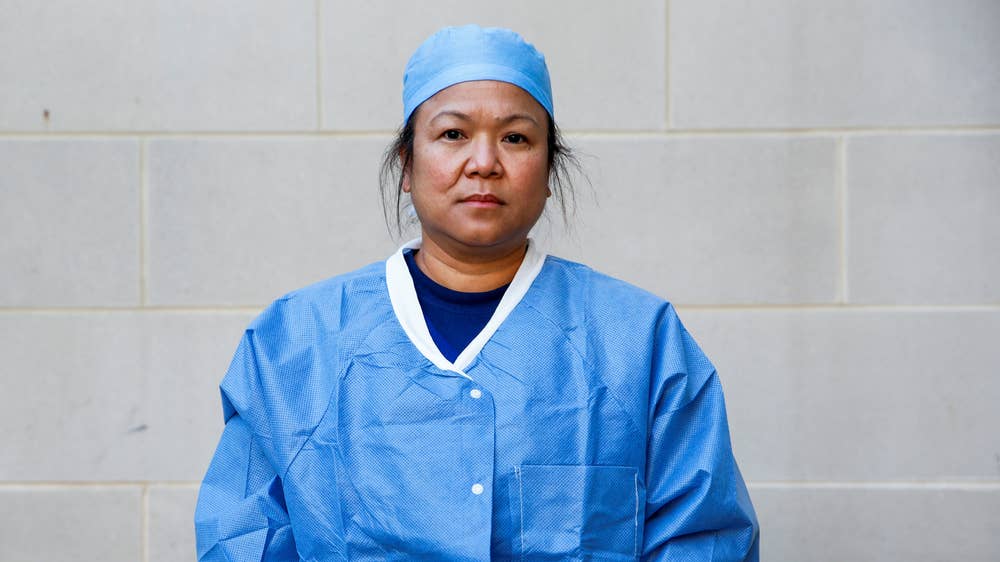
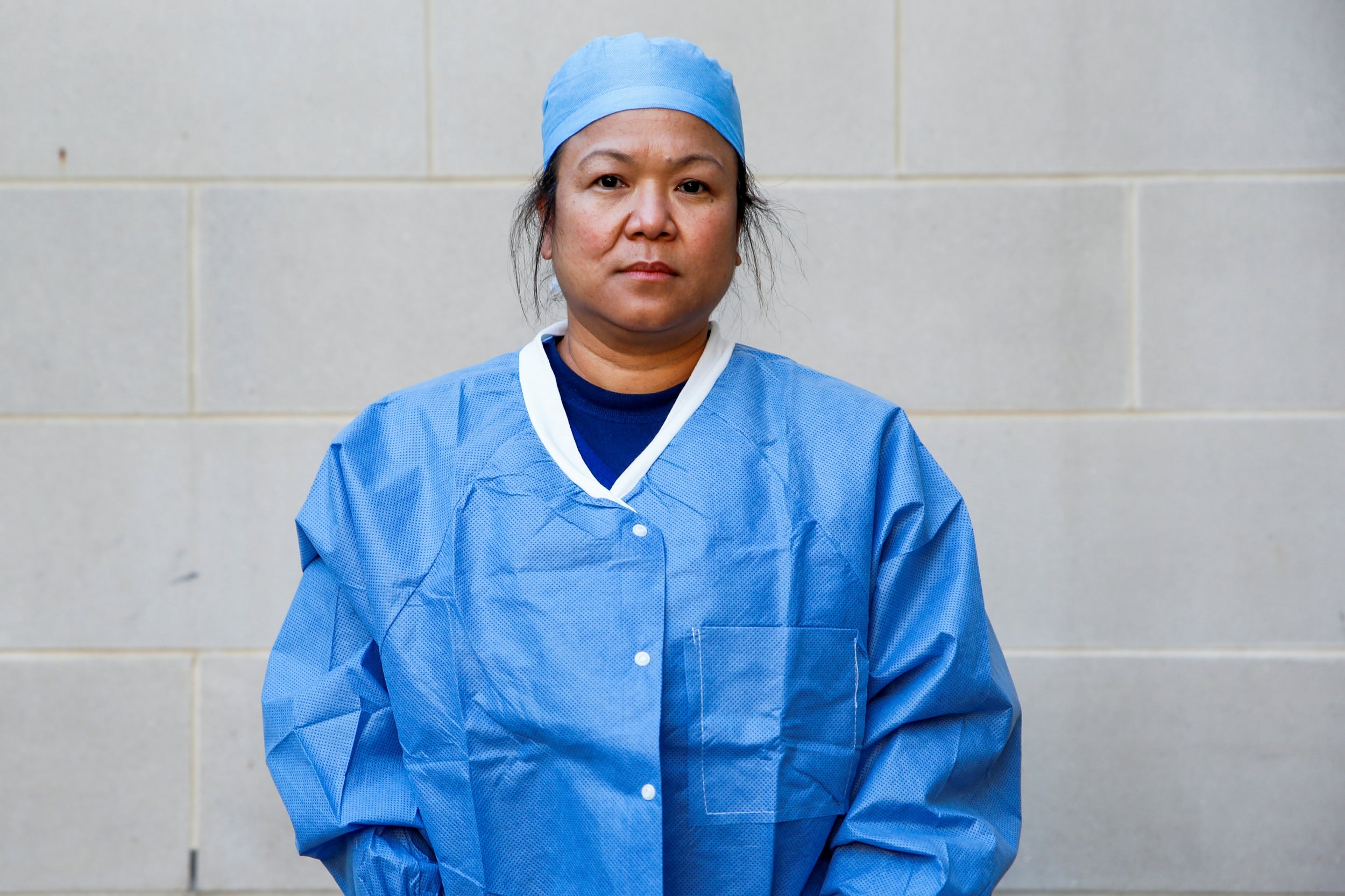
1/13
Cheryll Mack, 46, a registered nurse in the emergency department, poses for a photograph after a 12-hour shift outside the hospital where she works. “The Covid-19 spread has affected a lot of livelihood, a lot of people’s lives. It has created a crisis, death in general. So I would like to ask not one single person, but all people worldwide, to converge and join the platform that this is something that nobody can fight individually,” said Mack.
Reuters
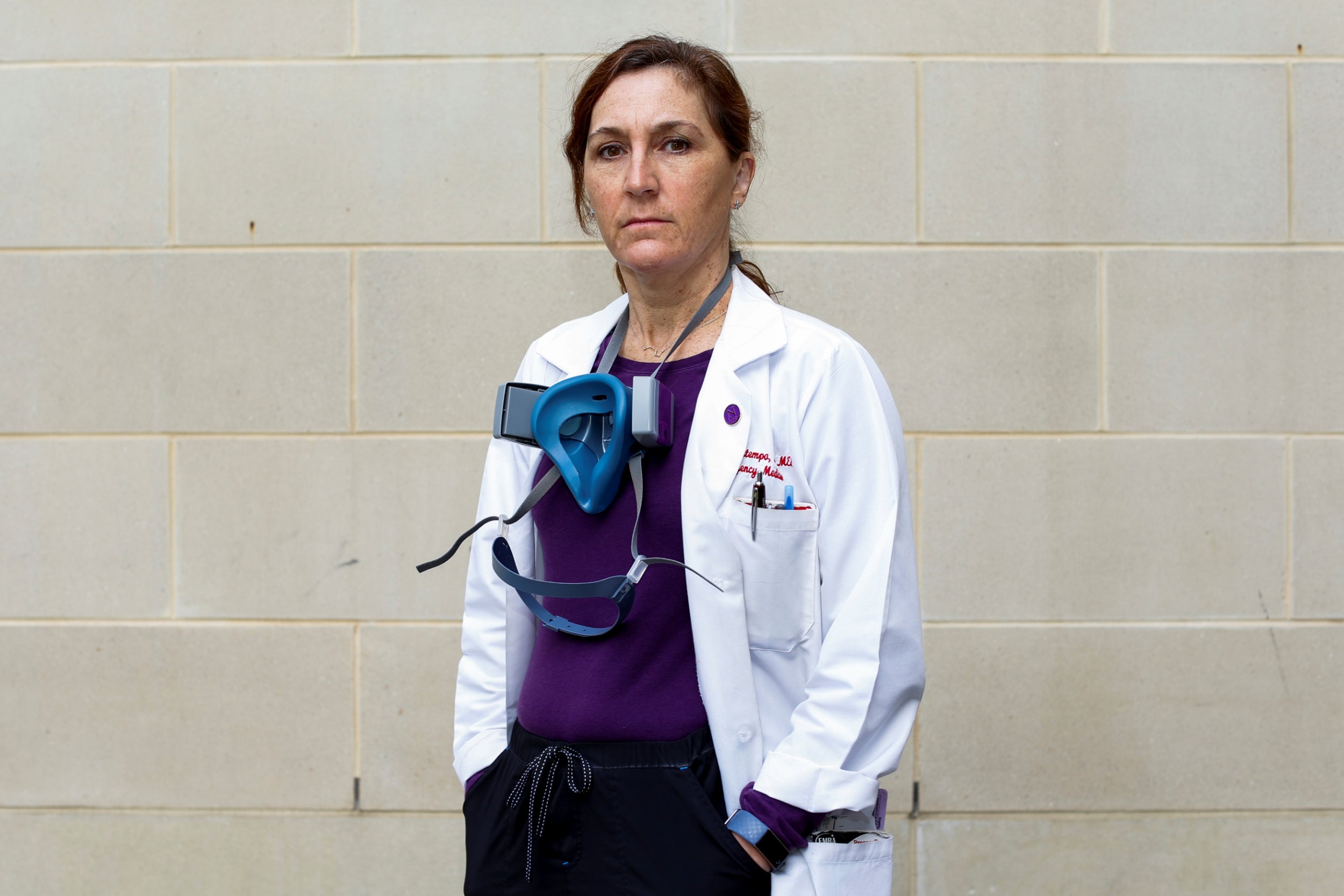
2/13
Dr Laura Bontempo, 50, an emergency medicine doctor wears her personal protective equipment she uses when she sees patients, while posing for a photograph after a nine-hour shift, outside the hospital. “The hardest moments have actually been separating families from patients, there is a no-visitor policy now and taking people away from their loved ones is very challenging,” Bontempo said. “I’m used to treating sick patients. I treat sick patients all the time. It’s very different knowing that the patient you are treating, is actually a risk to you as well. That’s the main difference here. No one who works in hospitals is afraid of treating sick people. Just want to keep staff safe and the patients safe at the same time.”
Reuters
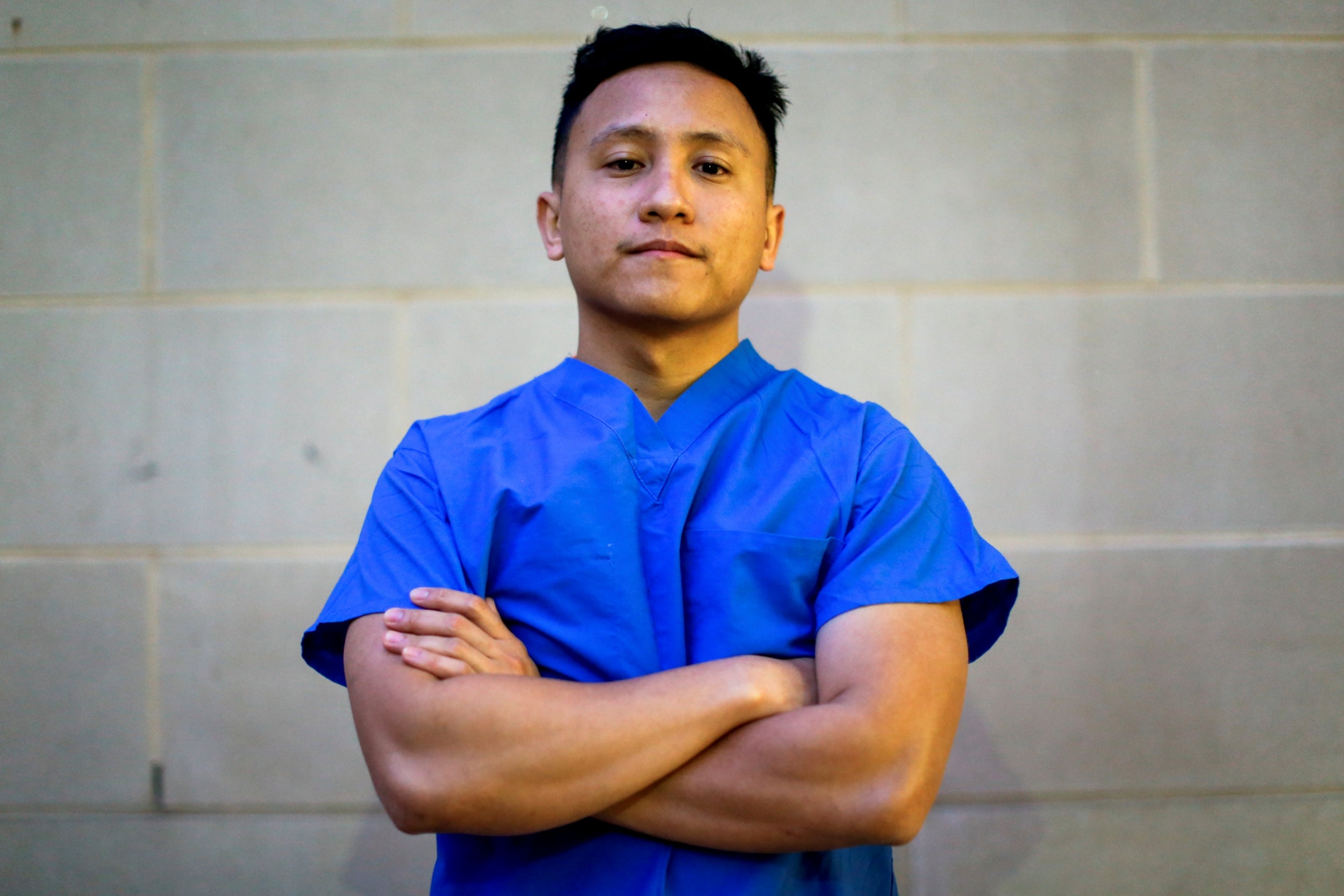
3/13
Ernest Capadngan, 29, a registered nurse who works at a biocontainment unit poses for a photograph after a 12-hour shift, outside the hospital. “The hardest moment during the shift was just seeing Covid patients die helpless and without their family members beside them,” Capadngan said.
Reuters
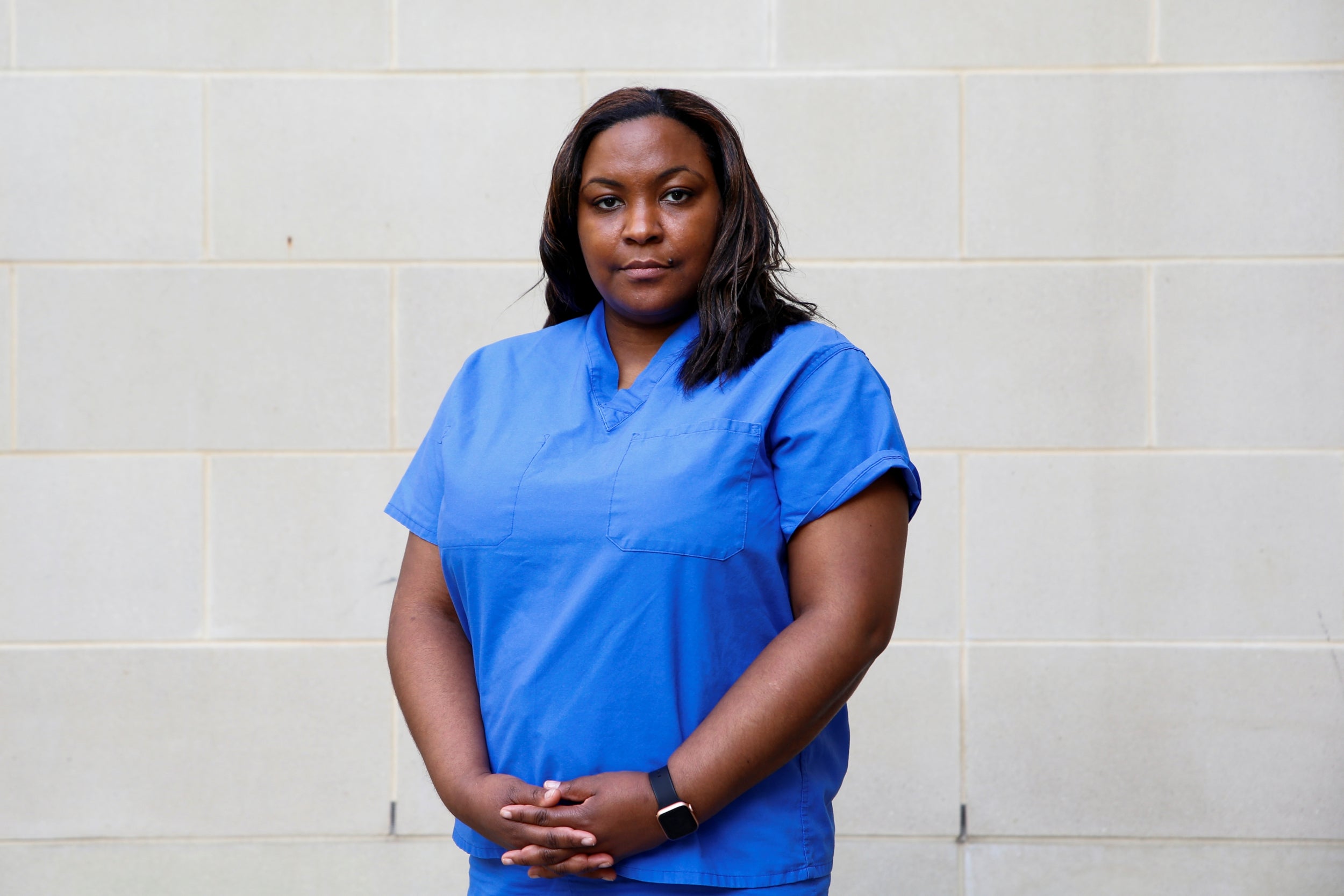
4/13
Martine Bell, 41, a nurse practitioner in an emergency department, poses for a photograph after a six-hour shift outside the hospital where she works. “The hardest thing in all of this, has been taking care of fellow healthcare providers. It really hits home and it’s really scary when you see someone that could be you coming in and now you’re taking care of them. It’s also hitting home that once healthcare providers start getting sick, who is going to be taking care of the public,” Bell said. “It’s very stressful, everyone is on edge. We don’t know who’s coming in next, or how sick they’re going to be, or if we are going to get a whole bunch of people or if we’re not going to get no one. It’s a really stressful and just a completely unusual time for all of us.”
Reuters
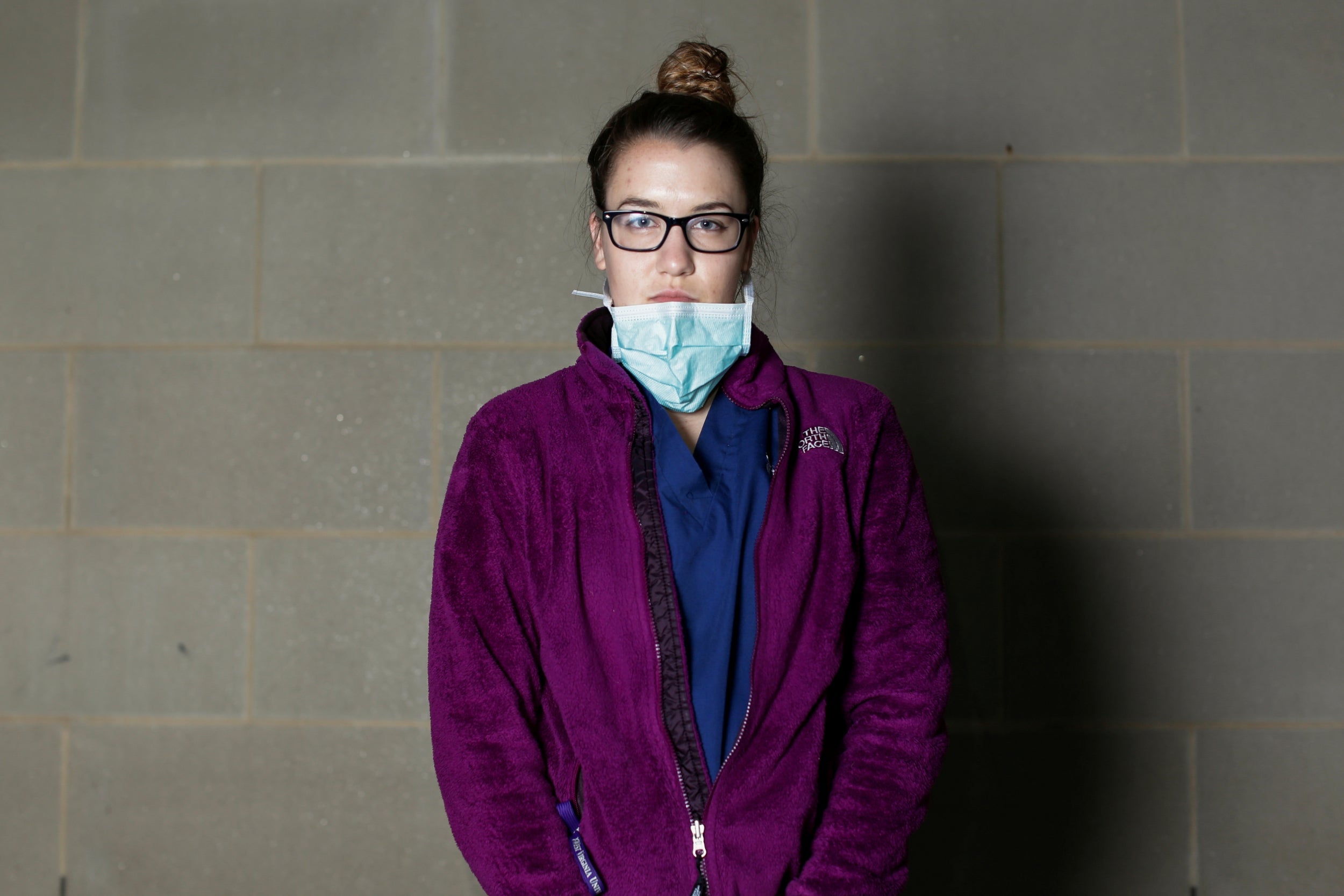
5/13
Kaitlyn Martiniano, 25, a registered nurse who works at a biocontainment poses for a photograph after a 12.5-hour shift, outside the hospital. “We have a lot of patients and they are pretty sick right now but we have not yet been hit as hard as New York or Seattle, so I feel like we are very lucky with that so far. Every day you have to just be optimistic.” Said Martiniano. “I think the reason that we are not being hit as hard right now is because so many things are closed, and because so many people are staying at home.”
Reuters
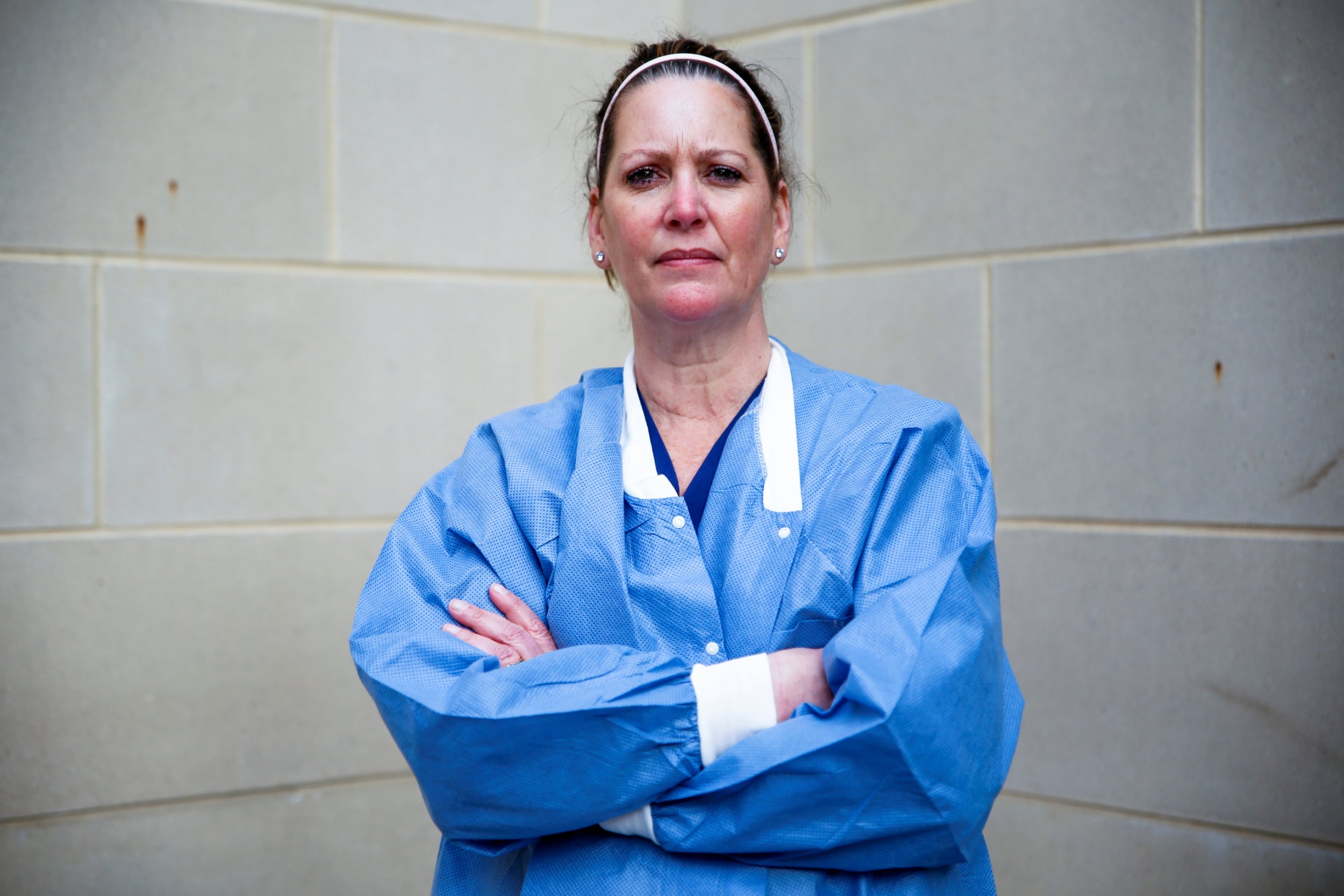
6/13
Tracey Wilson, 53, a nurse practitioner in an intensive care unit (ICU), poses for a photograph after a 12-hour shift, outside the hospital where she works. “I had a patient fall out of bed today and I had to call his wife and tell her and she couldn’t come see him, even though she pleaded and begged to come see him,” Wilson said. “There is a lot of unknowns and with that unknown is a lot of anxiety and stress that we’re not used to dealing with.”
Reuters
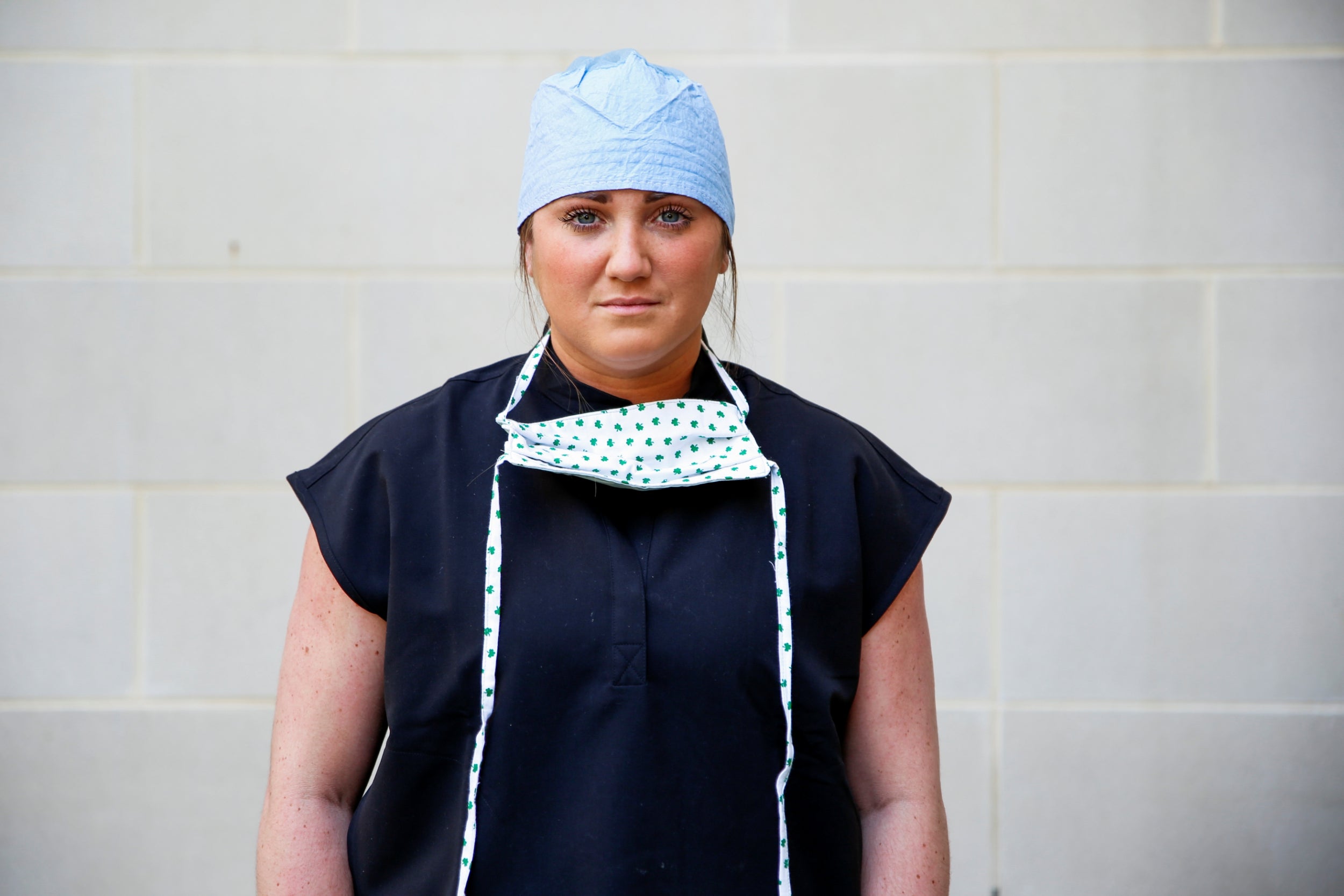
7/13
Meghan Sheehan, 27, a nurse practitioner in an emergency department, poses for a photograph after a 12-hour shift, outside the hospital where she works. “I think the hardest moment has been the fear that lives within all of us. There is a lot of unknown right now. We fear what’s going to happen tomorrow, how the emergency department will look next week when we come in. We have fears about our own colleagues, whether they will fall ill. We also fear that we could be asymptomatic carriers and bring this virus home to our families and our loved ones. There has been a lot of fear over our supplies and whether we’ll run out. And then obviously there is the fear that we will see patients and not be able to do everything we normally can to help save patients’ lives,” Sheehan said.
Reuters
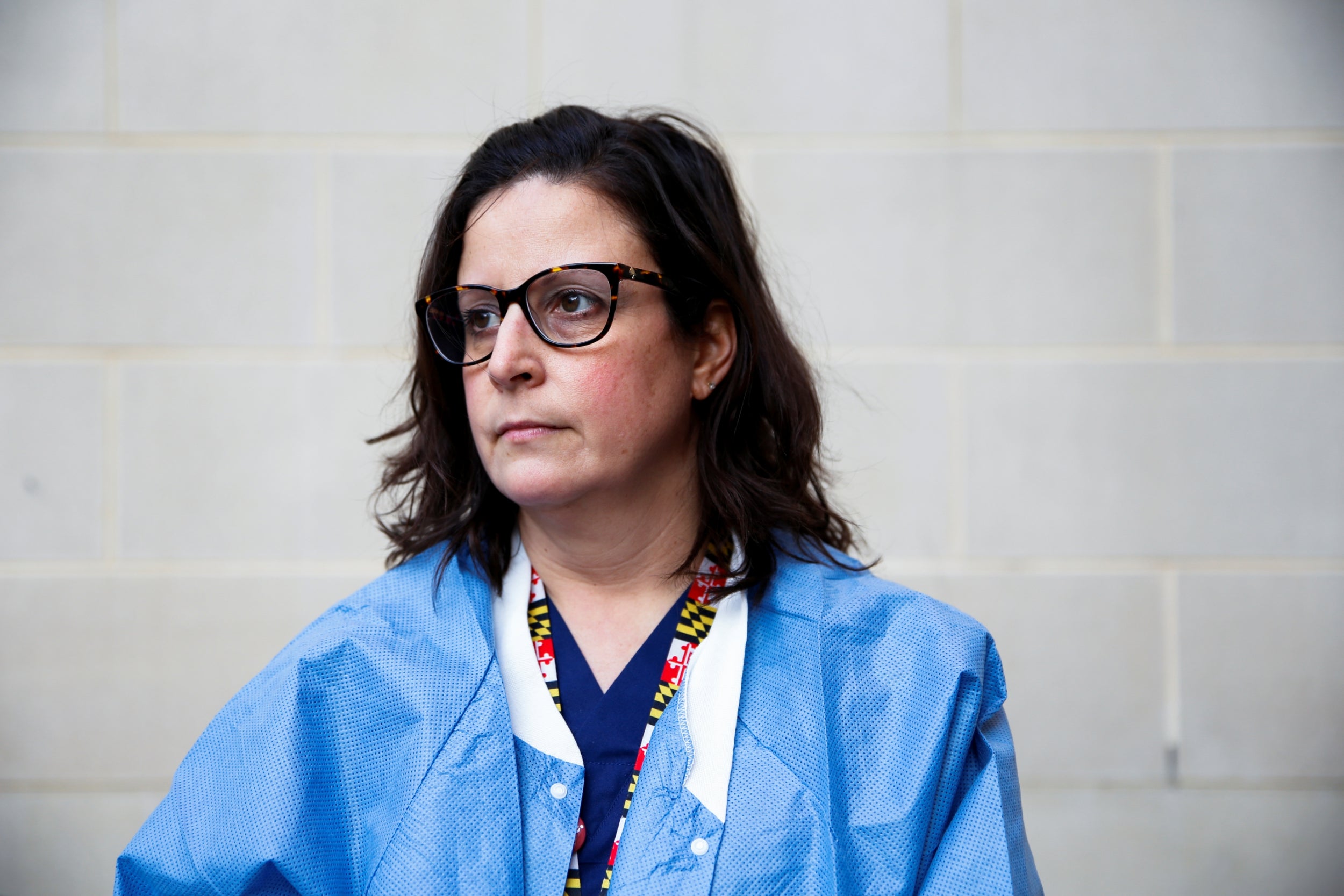
8/13
Kimberly Bowers, 44, a nurse practitioner in an ICU, poses for a photograph after a 13-hour shift, outside the hospital. “The hardest moment was a young woman who died and her family wasn’t able to be here with her,” Bowers said. “I think right now, it’s just frustrating and scary just not knowing what comes next.”
Reuters
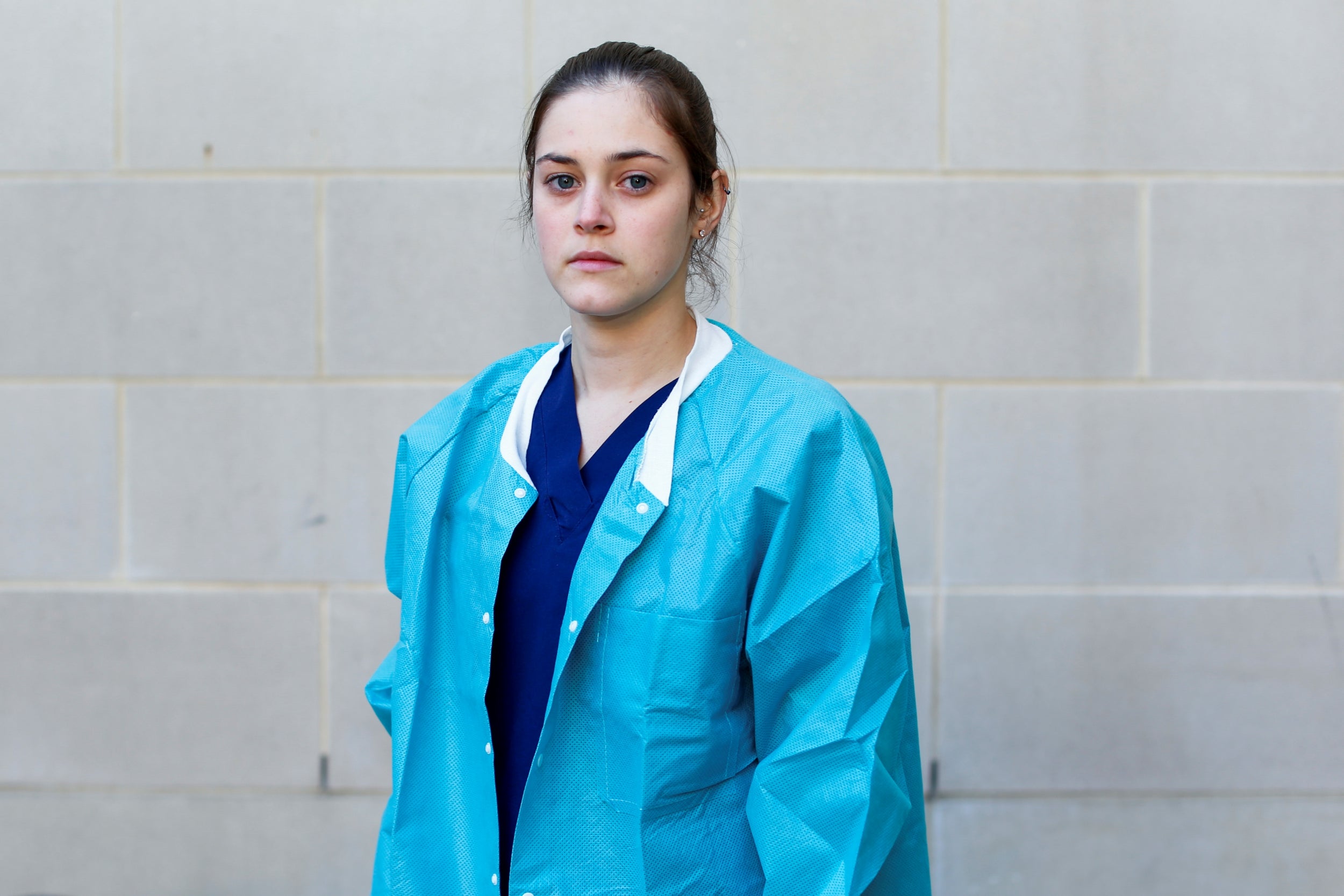
9/13
Tiffany Fare, 25, a registered nurse who works at a biocontainment unit poses for a photograph after a 13-hour shift, outside the hospital where she works. “One of the hardest moments was having to see a family member of a Covid patient, say goodbye over an iPad, rooms away. That was a tough one, I can’t imagine how hard it would be to be saying goodbye, you can’t see your loved one and then they’re gone,” Fare said. “My team has been really great to me. We’ve worked really well together and we’ve really come together in this crisis. We don’t really know each other, we all come from different units within the same hospital, so for us to come together and work so well as a team, it’s been a journey but I think that’s what is giving me hope.”
Reuters
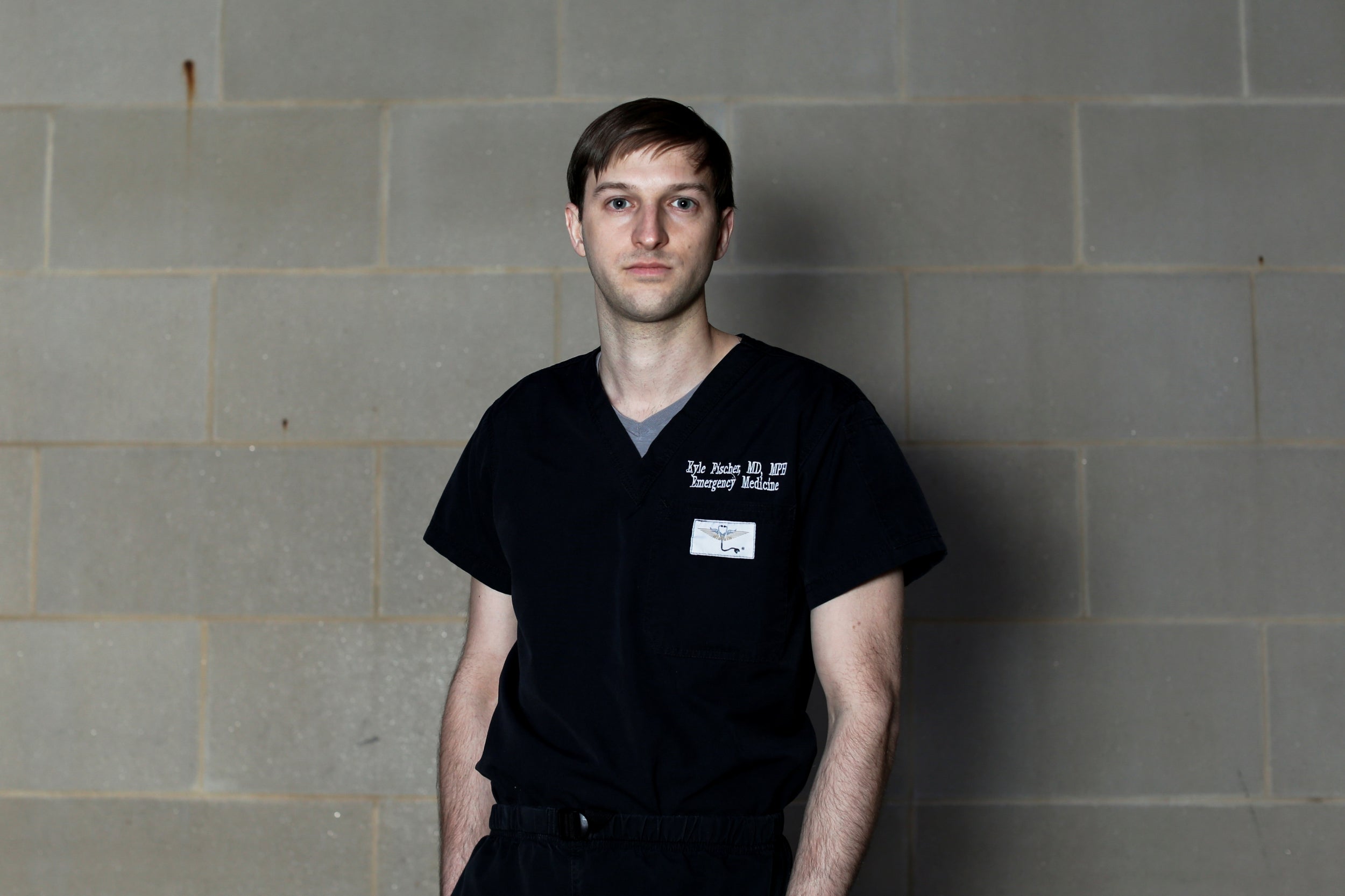
10/13
Dr Kyle Fischer, 35, an emergency medicine doctor, poses for a photograph after a 12-hour shift, outside the hospital where he works. “Since it’s a new virus, we don’t have any experience with it. For most diseases I am used to seeing it and taking care of it and this, I don’t have any starting place. I know what I’m hearing from New York, I’ve read all of the papers it seems like, but no one knows what the correct answers are, so there’s a huge amount of uncertainty and people are really, really sick. So it’s hard to second guess whether or not you are doing the right thing when you think you are but you never quite know,” said Fischer.
Reuters
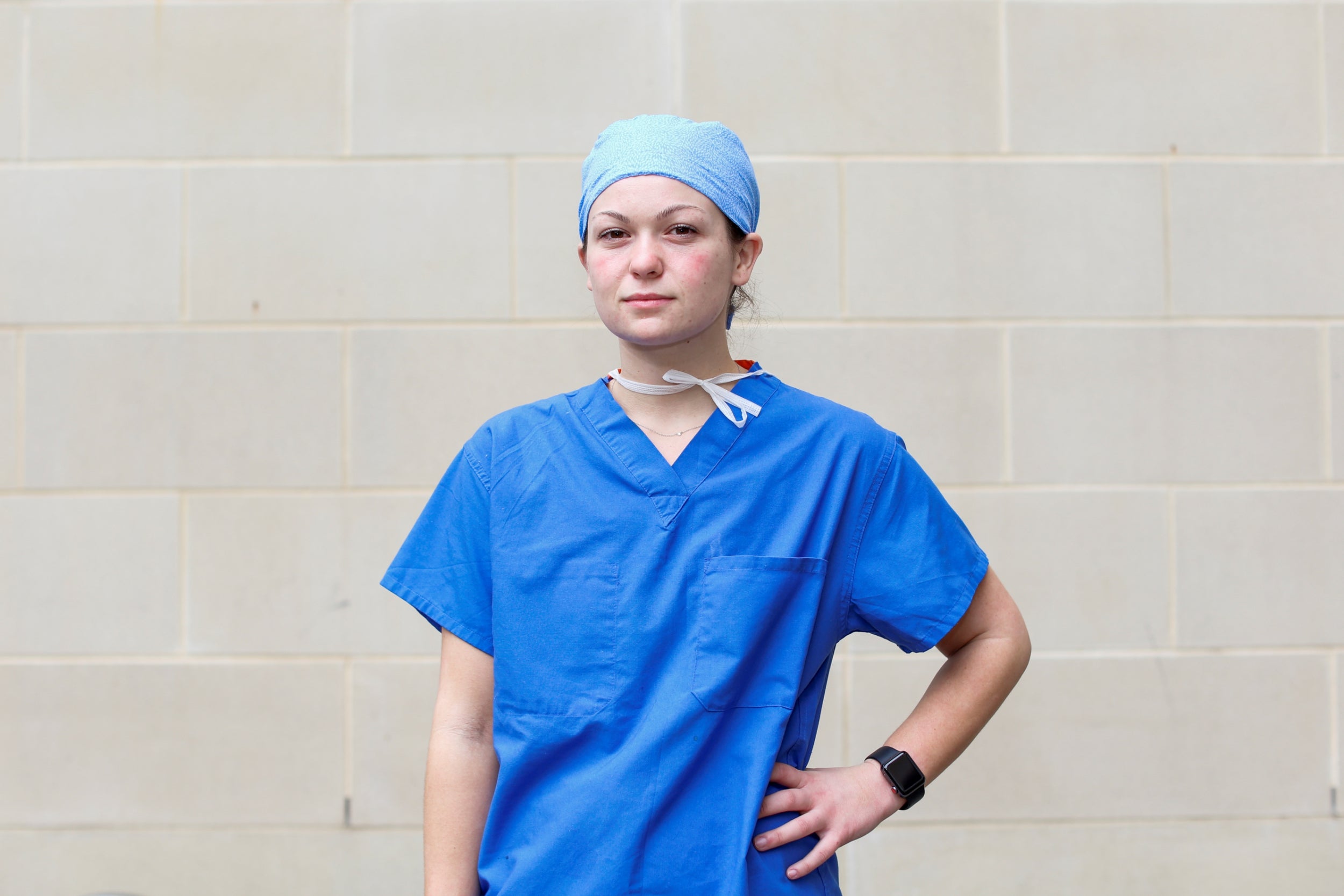
11/13
Julia Trainor, 23, a registered nurse at a surgical ICU, poses for a photograph after a 14-hour shift, outside the hospital. “The hardest moment was having to put a breathing tube in my patient who could no longer breathe for herself and after the breathing tube went in, we called her family and the husband, of course, couldn’t visit her because of visitor restrictions at the hospital. So I had to put him on the phone and hold the phone to her ear, as he told her that he loved her so much and then I had to wipe away her tears as she was crying,” said Trainor. “I’m used to seeing very sick patients and I’m used to patients dying but nothing quite like this. In the flip of a switch, without the support, they’re completely isolated. They’re very sick. Some of them recover and some of them don’t. But the hardest part, I would think, is them having to go through this feeling like they are alone.”
Reuters
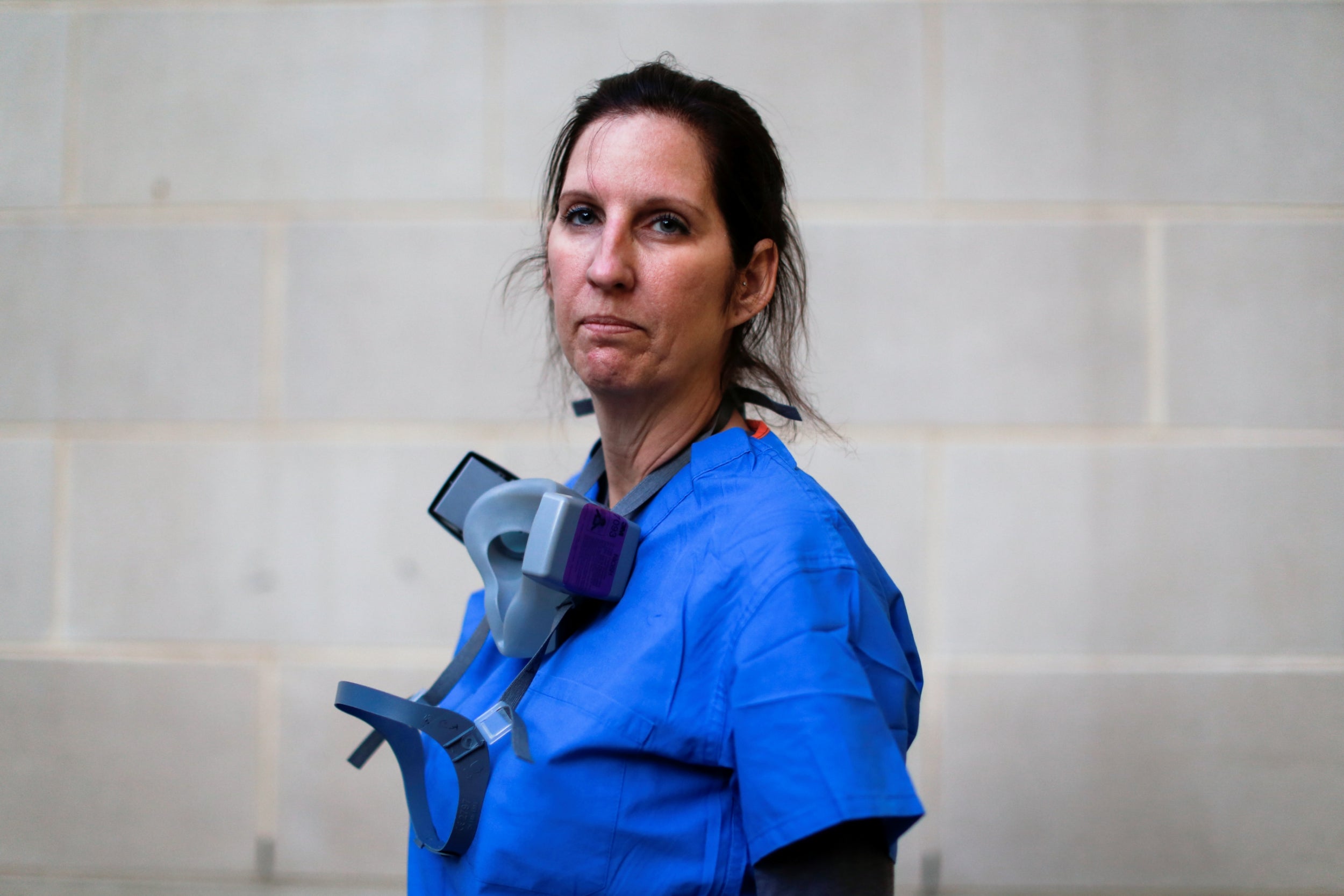
12/13
Lisa Mehring, 45, a registered nurse who works in a biocontainment unit with Covid-19 patients, poses for a photograph after a 12.5-hour shift, outside the hospital where she works in Maryland. “Seeing these new moms have babies has been the hardest moment along with having do their pumping for the new moms and them not being able to be with their newborn children, it’s hard to think of the family that they are missing,” Mehring said.
Photos Reuters
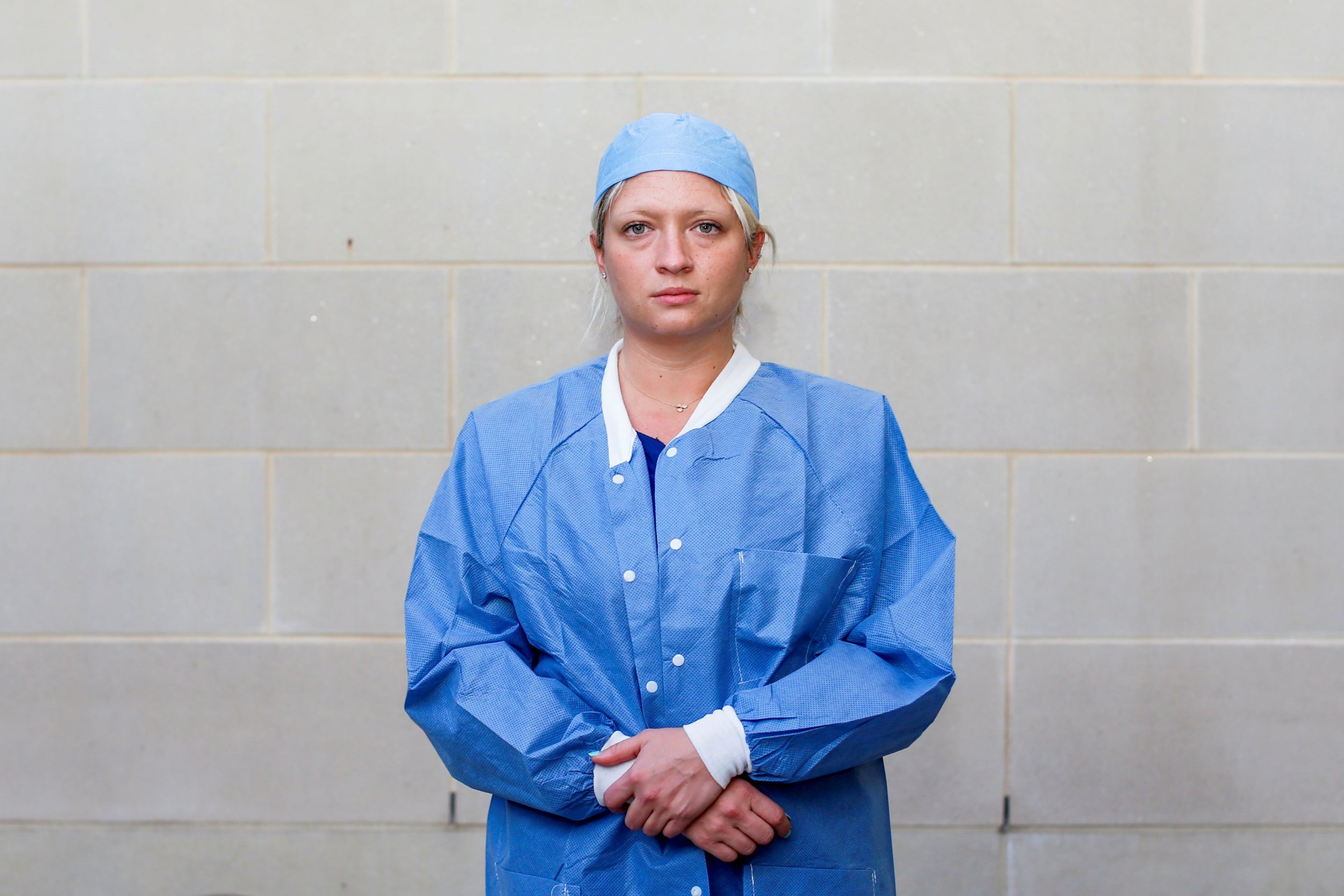
13/13
Jacqueline Hamil, 30, a registered nurse in an emergency department, poses for a photograph after a 12-hour shift outside the hospital. “The hardest moment of my shift today, I was in charge, and we had a really sick patient that was in a really, really small room and usually, when we have sick crashing patients, we can have a ton of resources and a ton of staff go in and help with the nurse and the doctors that are taking care of that patient. But due to the patient being ruled out for the coronavirus, we could only have five or six people in the room at a time and putting on all the gowns and gloves and masks and face shields to protect us in case the patient does have coronavirus, it takes a while, so the nurse that was in there, ended up being in the room for you know 6, 7 hours with minimal breaks and it was hard being in charge and knowing that she was stuck in the room and really nothing I could do to help her,” Hamil said.
Reuters

1/13
Cheryll Mack, 46, a registered nurse in the emergency department, poses for a photograph after a 12-hour shift outside the hospital where she works. “The Covid-19 spread has affected a lot of livelihood, a lot of people’s lives. It has created a crisis, death in general. So I would like to ask not one single person, but all people worldwide, to converge and join the platform that this is something that nobody can fight individually,” said Mack.
Reuters

2/13
Dr Laura Bontempo, 50, an emergency medicine doctor wears her personal protective equipment she uses when she sees patients, while posing for a photograph after a nine-hour shift, outside the hospital. “The hardest moments have actually been separating families from patients, there is a no-visitor policy now and taking people away from their loved ones is very challenging,” Bontempo said. “I’m used to treating sick patients. I treat sick patients all the time. It’s very different knowing that the patient you are treating, is actually a risk to you as well. That’s the main difference here. No one who works in hospitals is afraid of treating sick people. Just want to keep staff safe and the patients safe at the same time.”
Reuters

3/13
Ernest Capadngan, 29, a registered nurse who works at a biocontainment unit poses for a photograph after a 12-hour shift, outside the hospital. “The hardest moment during the shift was just seeing Covid patients die helpless and without their family members beside them,” Capadngan said.
Reuters

4/13
Martine Bell, 41, a nurse practitioner in an emergency department, poses for a photograph after a six-hour shift outside the hospital where she works. “The hardest thing in all of this, has been taking care of fellow healthcare providers. It really hits home and it’s really scary when you see someone that could be you coming in and now you’re taking care of them. It’s also hitting home that once healthcare providers start getting sick, who is going to be taking care of the public,” Bell said. “It’s very stressful, everyone is on edge. We don’t know who’s coming in next, or how sick they’re going to be, or if we are going to get a whole bunch of people or if we’re not going to get no one. It’s a really stressful and just a completely unusual time for all of us.”
Reuters

5/13
Kaitlyn Martiniano, 25, a registered nurse who works at a biocontainment poses for a photograph after a 12.5-hour shift, outside the hospital. “We have a lot of patients and they are pretty sick right now but we have not yet been hit as hard as New York or Seattle, so I feel like we are very lucky with that so far. Every day you have to just be optimistic.” Said Martiniano. “I think the reason that we are not being hit as hard right now is because so many things are closed, and because so many people are staying at home.”
Reuters

6/13
Tracey Wilson, 53, a nurse practitioner in an intensive care unit (ICU), poses for a photograph after a 12-hour shift, outside the hospital where she works. “I had a patient fall out of bed today and I had to call his wife and tell her and she couldn’t come see him, even though she pleaded and begged to come see him,” Wilson said. “There is a lot of unknowns and with that unknown is a lot of anxiety and stress that we’re not used to dealing with.”
Reuters

7/13
Meghan Sheehan, 27, a nurse practitioner in an emergency department, poses for a photograph after a 12-hour shift, outside the hospital where she works. “I think the hardest moment has been the fear that lives within all of us. There is a lot of unknown right now. We fear what’s going to happen tomorrow, how the emergency department will look next week when we come in. We have fears about our own colleagues, whether they will fall ill. We also fear that we could be asymptomatic carriers and bring this virus home to our families and our loved ones. There has been a lot of fear over our supplies and whether we’ll run out. And then obviously there is the fear that we will see patients and not be able to do everything we normally can to help save patients’ lives,” Sheehan said.
Reuters

8/13
Kimberly Bowers, 44, a nurse practitioner in an ICU, poses for a photograph after a 13-hour shift, outside the hospital. “The hardest moment was a young woman who died and her family wasn’t able to be here with her,” Bowers said. “I think right now, it’s just frustrating and scary just not knowing what comes next.”
Reuters

9/13
Tiffany Fare, 25, a registered nurse who works at a biocontainment unit poses for a photograph after a 13-hour shift, outside the hospital where she works. “One of the hardest moments was having to see a family member of a Covid patient, say goodbye over an iPad, rooms away. That was a tough one, I can’t imagine how hard it would be to be saying goodbye, you can’t see your loved one and then they’re gone,” Fare said. “My team has been really great to me. We’ve worked really well together and we’ve really come together in this crisis. We don’t really know each other, we all come from different units within the same hospital, so for us to come together and work so well as a team, it’s been a journey but I think that’s what is giving me hope.”
Reuters

10/13
Dr Kyle Fischer, 35, an emergency medicine doctor, poses for a photograph after a 12-hour shift, outside the hospital where he works. “Since it’s a new virus, we don’t have any experience with it. For most diseases I am used to seeing it and taking care of it and this, I don’t have any starting place. I know what I’m hearing from New York, I’ve read all of the papers it seems like, but no one knows what the correct answers are, so there’s a huge amount of uncertainty and people are really, really sick. So it’s hard to second guess whether or not you are doing the right thing when you think you are but you never quite know,” said Fischer.
Reuters

11/13
Julia Trainor, 23, a registered nurse at a surgical ICU, poses for a photograph after a 14-hour shift, outside the hospital. “The hardest moment was having to put a breathing tube in my patient who could no longer breathe for herself and after the breathing tube went in, we called her family and the husband, of course, couldn’t visit her because of visitor restrictions at the hospital. So I had to put him on the phone and hold the phone to her ear, as he told her that he loved her so much and then I had to wipe away her tears as she was crying,” said Trainor. “I’m used to seeing very sick patients and I’m used to patients dying but nothing quite like this. In the flip of a switch, without the support, they’re completely isolated. They’re very sick. Some of them recover and some of them don’t. But the hardest part, I would think, is them having to go through this feeling like they are alone.”
Reuters

12/13
Lisa Mehring, 45, a registered nurse who works in a biocontainment unit with Covid-19 patients, poses for a photograph after a 12.5-hour shift, outside the hospital where she works in Maryland. “Seeing these new moms have babies has been the hardest moment along with having do their pumping for the new moms and them not being able to be with their newborn children, it’s hard to think of the family that they are missing,” Mehring said.
Photos Reuters

13/13
Jacqueline Hamil, 30, a registered nurse in an emergency department, poses for a photograph after a 12-hour shift outside the hospital. “The hardest moment of my shift today, I was in charge, and we had a really sick patient that was in a really, really small room and usually, when we have sick crashing patients, we can have a ton of resources and a ton of staff go in and help with the nurse and the doctors that are taking care of that patient. But due to the patient being ruled out for the coronavirus, we could only have five or six people in the room at a time and putting on all the gowns and gloves and masks and face shields to protect us in case the patient does have coronavirus, it takes a while, so the nurse that was in there, ended up being in the room for you know 6, 7 hours with minimal breaks and it was hard being in charge and knowing that she was stuck in the room and really nothing I could do to help her,” Hamil said.
Reuters
“They’ve said they’re having a review, I don’t know the science I think we will want to see the science. We would support the government on relaxing the rules, of course, as long as it’s the right time to do it. None of us want to be in this state of lockdown and paralysis forever and indeed our economy at some point to open up again, all of us recognise that.”
He went on: “Many other countries around the world use a different rule and indeed, we’ve seen a couple of countries recently – I think Norway and Denmark – have moved from two metres to something less as well but it’s important that we look at it comprehensively in the round and that’s what we will do urgently… I can very much understand the impact, the positive impact it will have on business’s ability to reopen and thereby maintain the jobs that they have.”
Some countries have less strict rules than two metres, though many also have other tougher conditions than the UK such as stricter requirements to wear face coverings.
A snap poll by YouGov this week found that 58 per cent of people want the two-metre rule to be kept at the current distance, with 24 per cent agreeing it should be dropped to one metre.



